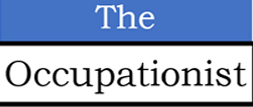Hazards at workplace should remain at workplace; they shouldn’t come home. Responsible workplaces have a method to mitigate these hazards. When workplace hazards come home, they rub on the family members and cause them harm – and that’s not a nice thing.
A worker can bring home, unknowingly, many hazardous substances depending on their workplace and working conditions, on their clothes, skin, footwear, accessories (mobile phone, wallet etc.) and even in vehicle interiors.
Family members are vulnerable to these workplace toxins, which can hide in furniture, laundry, circulate in the entire house and spread by person-to-person contact.
Workplace toxins have health impacts that could be temporary or permanent. Symptoms of toxicity may arise years after initial exposure. The exposure to workplace toxins could be insidious or gradual but health effects may be seen after a long time.
For example, lead is one toxin that can cause physical and mental developmental issues in children due to chronic exposure. In high doses, lead is fatal. According to EPA (Environmental Protection Agency, USA), ‘lead from paint, including lead-contaminated dust, is one of the most common causes of lead poisoning.’
Industries like construction, manufacturing, mining, transportation, agriculture, pesticide are most likely to make the workers to take home workplace toxins unless strict steps are taken to prevent.
Take home toxins (THT) can be classified as:
- Chemical (Asbestos, Arsenic, Lead, Silica, Fiberglass, Pesticide etc.)
- Biological (animal waste, infectious agents etc.)
- Radioactive
- Psychological (work stress, bullying, promotions etc.)
Psychological classification is not a ‘thing’ that can be classified as a toxin but in reality, it is. I view psychological hazard at workplace as a ‘take home toxin’ because a psychological hazard (stress) affecting a worker at workplace usually rubs into family members and causes subtle psychological issues at home that have a tendency to become chronic and serious.
OSHA (Occupational Health and Safety Administration) USA has standards that are aimed at preventing take-home toxins in construction (1926.62) and general industry (1910.1025). OSHA can impose fines on employers who don’t follow them.
Requirements in these standards include:
- Providing workers a place to change into clean clothes after work to avoid contaminating their personal clothes
- Providing appropriate shower and hand washing facilities
- Controlling dust and fumes in workplace
- Testing the worksite for hazards
- Administering proper training to workers
Employers should make sure that workers are provided with the right PPE to avoid workplace toxins coming into contact with the garments beneath. Employers should also ensure employees don’t leave the workplace wearing the clothes they wore while working.
Business owners should seek advice from Occupational Health physicians and Industrial Hygienists to check if there are workplace toxins in the industries they operate and take appropriate steps as outlined above to prevent ‘take-home toxins’ being taken from workplace to homes.
Family members should also be aware of the idea of ‘take-home toxins’ and politely but regularly ask the worker before entering home if s/he had de-toxified while leaving the workplace. This habit of family members will ensure that the worker in a hurry to come back home de-toxifies at workplace thus preventing illnesses amongst family members.
Awareness and taking appropriate steps to mitigate the effects of take-home toxins will reduce the incidence of a lot of illnesses in the worker, the families, and communities.
No workplace toxin (hazard) should come home, and employers must ensure workers get regular, trustworthy, dependable and well-supervised protection.
For more info, contact
____________________________________________________________________________________________
Dr Ajay Sati is an Occupational Health physician who prefers to describe himself as an Occupationist, to denote, ‘an expert in diseases and other concerns of occupations.’ Dr Sati has managed health and wellness programs in industries he worked, like the atomic energy, and energy (oil & gas) in India and overseas. An experienced virtual consultation expert he was involved in many greenfield and brownfield projects providing inputs from health point of view.



